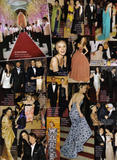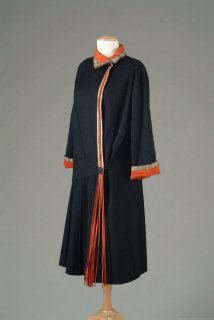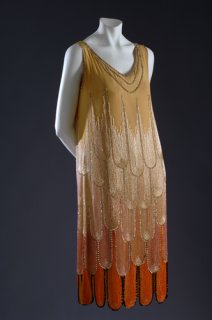SomethingElse
Press escape to continue.
- Joined
- Mar 22, 2007
- Messages
- 5,442
- Reaction score
- 0
The Parisian designer, Paul Poiret (1879 - 1944), was perhaps the most influential couturier of the early twentieth century, bursting upon the fashion scene in 1903 when he opened his own house on the Rue Auber. His 1908 collection looked directly to neo-classical models, minimising the effect of the corset or of tightly fitted garments; and then in 1910 he launched his scandalous harem trousers for women, only furthering his fame. He is now celebrated for his hobble skirts (as copied in the outfits in the images below), and also for his love of the Orient and the Near East. Poiret was inspired by the vibrant Moorish or Indian patterns, fabrics and motifs, including them in his collections.
This scarlet silk robe, brocaded with metal threads and silks was retailed by Poiret's fashion house in about 1912. However, it is actually an India textile which had been made up as a coat in Uzbeckistan or Turkestan for local consumption. It was imported directly by Poiret's agents to France, and then retailed by him after slight alterations with braiding and gussets for European sizing, and an added label. This simple recycling from one culture to another shows the popularity of "exoticism" in Europe around 1910, an influence which seems as strong today.


manchestergalleries.org
Last edited by a moderator:


 "Evêque" (meaning "Bishop"). Summer ensemble blouse and girdled skirt, c. 1907.
"Evêque" (meaning "Bishop"). Summer ensemble blouse and girdled skirt, c. 1907.







 Yes, please do!!
Yes, please do!!
 Source link in case French speakers wish to read the article. It is very interesting!
Source link in case French speakers wish to read the article. It is very interesting! 























